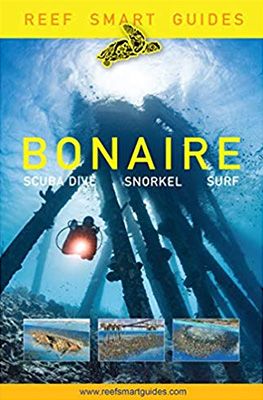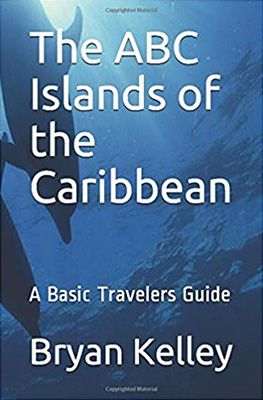Bonaire has been a favourite of ours in the Caribbean for over twenty years. This second largest island of the former Netherlands Antilles never bores us. We usually come here to dive or snorkel and to enjoy the pleasant temperatures and tropical outdoor life. Last time, we visited the Washington Slagbaai Nature Park, too. And because we were barely able to take it all in, we visited this very interesting park again later on.
We had been there before during previous holidays on this tropical island. Still, the park continues to surprise us. You would not expect much variation in flora and fauna from such a dry island as Bonaire. But nothing could be further from the truth! Apart from nature, you will find many beautiful views, historical sights and idyllic beaches. For this reason alone, a visit to the park needs to be on your list for your holiday in Bonaire.
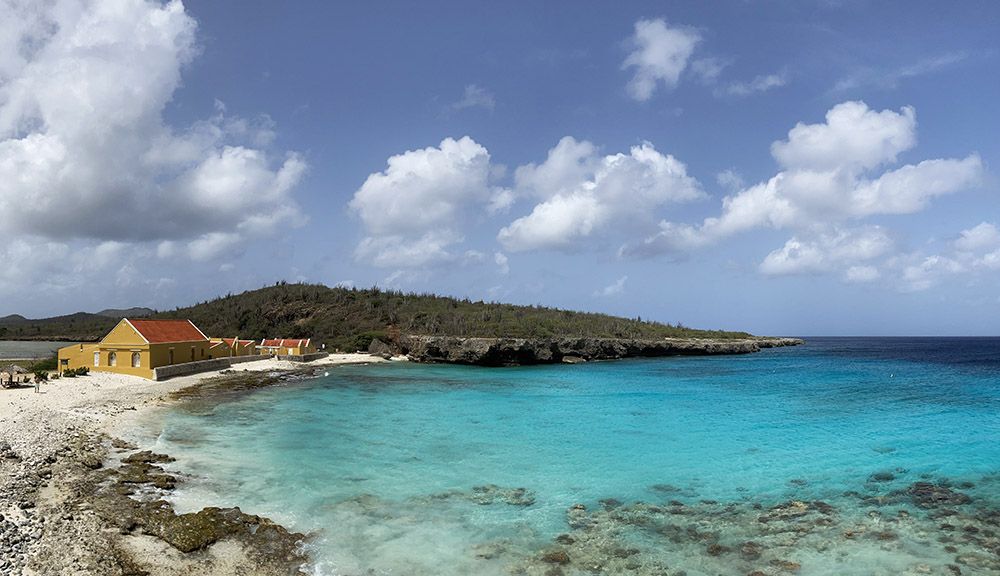
What to see and what to do in Washington Slagbaai National Park
The Washington Slagbaai National Park (WSNP) in the northwest of Bonaire was established in 1969. With this, the first 4286-hectare nature park of the former Netherlands Antilles became a reality. Since then, the park has been a safe habitat for various animal species of Bonaire. These include parrots, flamingos, parakeets, iguanas and many other types of birds and reptiles, and also, all four species of sea turtles that live in the Caribbean.
Wondering how Washington Slagbaai National Park got its special name? Read our mini-blog about the park’s history.
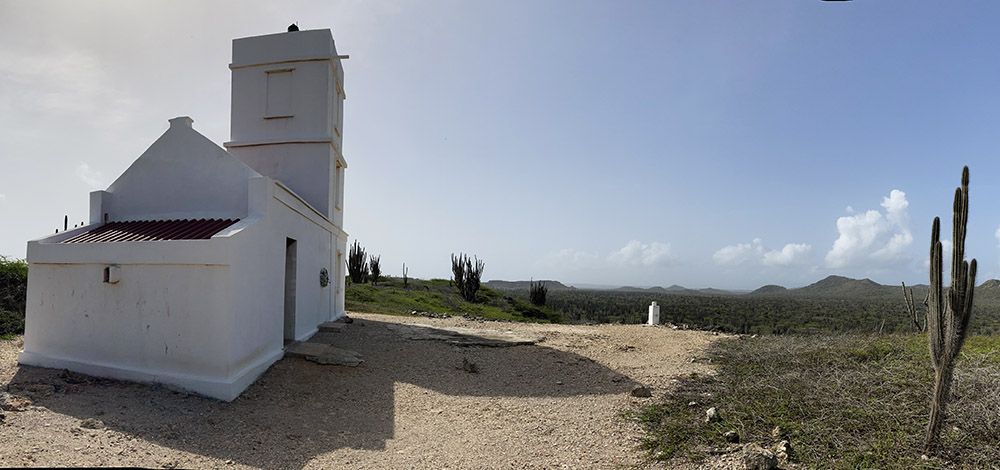
Hiking in Washington Slagbaai National Park
Thanks to the ever-present, cooling trade winds, Bonaire is an excellent place for walking. In the park itself, three beautiful walking trails have been planned. The first is the one-and-a-half-hour ‘Lagadishi’ route over flat terrain. The walk starts at the entrance of the park and leads to the rugged east coast. You also pass Playa Chikitu, a beautiful white sandy beach. You should definitely not go into the rough sea here. The immediate surroundings are fantastic though.
Another hike, the Kasikunda trail, is only two kilometres long. But there is a lot to see on this trail. The highlight is the beautiful view from a volcanic hill on the north coast and the bizarre landscape full of cacti. What’s more, you are treated to beautiful views on the way back down. Good walking shoes are necessary, as well as plenty of drinking water.
The third hike is the Subí Brandaris trail to the highest mountain on the island. It is our favourite, which is why we have described it in more detail.
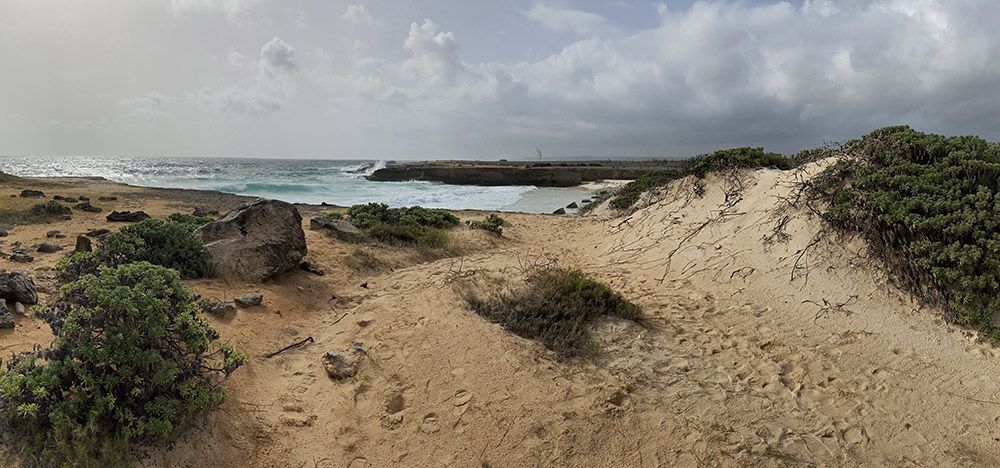
Climbing the ‘Brandaris’
The 241-metre-high Brandaris is the highest mountain in Bonaire. Also the third highest mountain within the Kingdom of the Netherlands. From the top, you get a fantastic view of the island. In clear weather you can see Curaçao and sometimes even Venezuela! If you like hiking, this is a hike you should definitely do.
The ‘Subí Brandaris’ hike takes you to the top by white marked stones. The 45-60-minute climb is not easy. But if you are in good hiking condition, it is certainly doable. Wear good walking shoes because of the loose stones, no flip-flops, that’s for sure. Start as early as possible to avoid the heat around noon. And take sufficient drinking water! By the way: if you want to climb the Brandaris, you have to enter the park before noon.
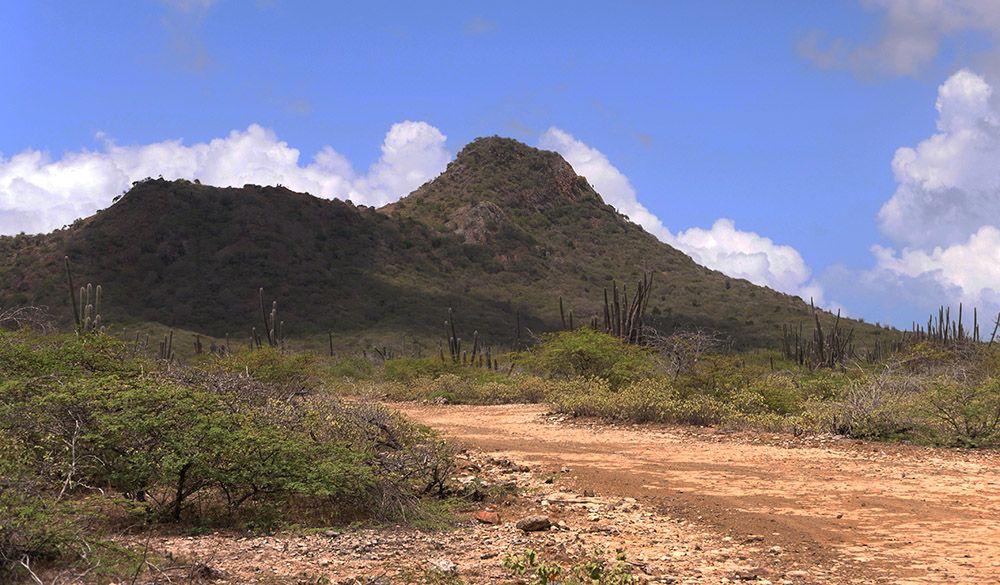
Mountain biking
In Bonaire, you see more and more people mountain biking. Especially in the northwest there are nice bike routes to be found. In the Washington Slagbaai National Park, you actually only have one route. It is the same route that the few cars going through the park follow.
The beautiful 34-kilometre route has some climbs but is otherwise mostly flat. Still, you need to be in good shape for this route. Allow plenty of time for it as there are so many sights you’ll have to stop regularly.
As with walking, the tip for cycling is to get to the park as early as possible. Apply sunscreen (coral-friendly) and wear sun-protective clothing like a cap. Take plenty of drinking water with you and dive into the seawater at Boca Slagbaai halfway through the ride. You can hire a mountain bike at Bike Rental in Kralendijk.
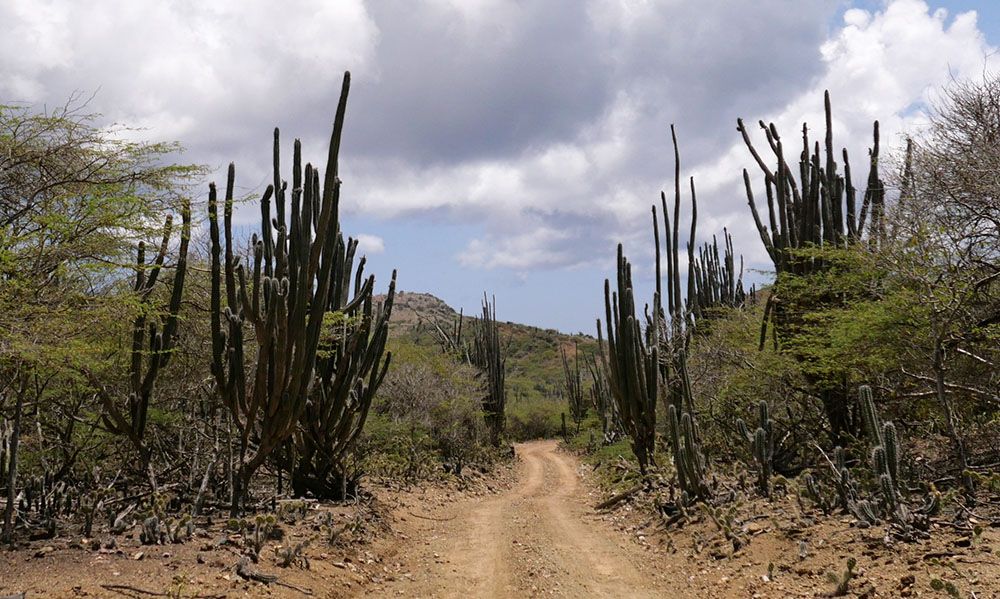
Scuba diving and snorkelling
On the west coast of the park, there are some excellent diving and snorkelling spots. The map of the park mentions seven of them. We didn’t visit all of them, but we really liked Wayaka 2. A long set of steps leads down to a small but lovely beach. Directly from the beach you find the first, most beautiful corals. With your mask and snorkel, you can get on with admiring them!
If you are diving with compressed air, it is best to swim to the drop-off first. The area before that seems to have been destroyed by a hurricane. At the drop-off, however, the reef comes back to life. We saw turtles, the most beautiful corals and a lot of reef fish. By the way, there is no diving centre in the park. So, take your diving gear including bottles with you from your hotel or diving centre.
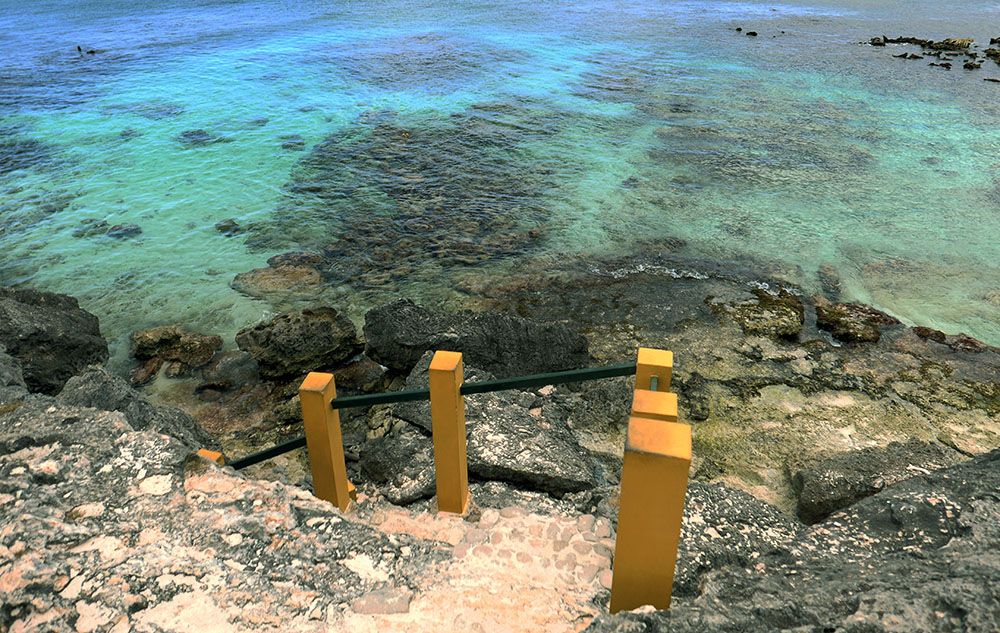
Bird watching
The Washington Slagbaai National Park is a fantastic park for birdwatchers. You will see and hear Tropical Mockingbirds, Masked Shrikes, Mangrove Warblers, Sugar Dwarfs, Corn Parakeets, Dark Flycatchers and the Orange Oriole, among others. The Park is also known as one of the few breeding sites in the world of the endangered Yellow-Shouldered Parrot.
The best bird watching spots in the park are the freshwater springs of Pos Mangel and Put Bronswinkel. Besides the bird species mentioned above, you will also find Scaly-naped pigeons and Pearly-eyed thrashers. There are also naked-eyed pigeons, blue-tailed emerald hummingbirds, white-bellied hummingbirds, cayennetirans, bearded vireos, foxgloves and yellow orioles.
Besides, there is an observation tower at Saliña Slagbaai where you can admire many bird species. Not much of a bird watcher? Pull the car over as soon as you pass Slagbaai manor house. At the Saliña Slagbaai you can see hundreds of flamingos right in front of you. A magnificent sight!
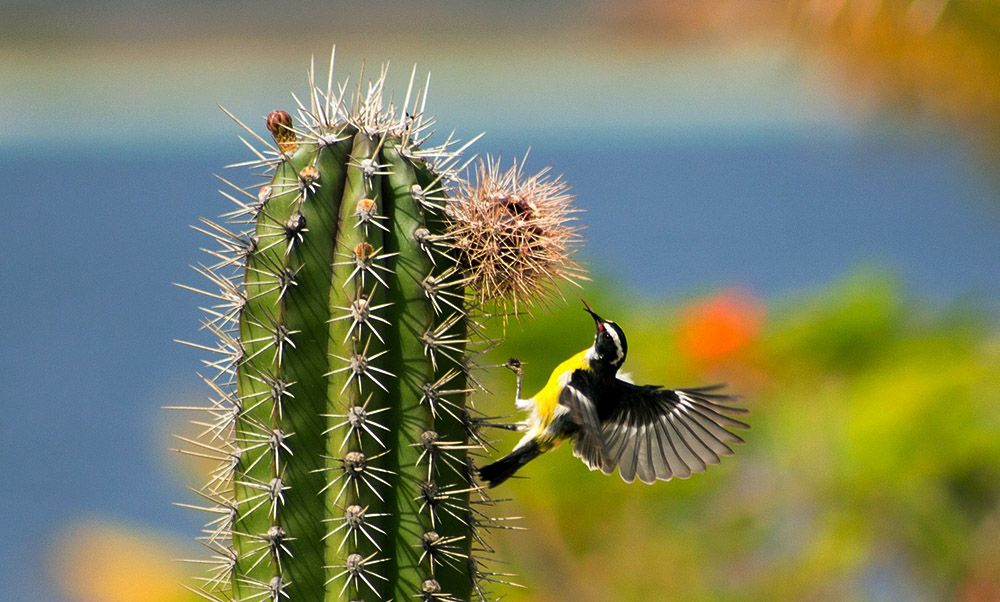
The short and long route through Washington Slagbaai National Park
.
Once in the park you can drive two routes with your car: the long and the short route. There is a lot to see and do on both routes. At the beginning of the route along Saliña Matijs, the routes overlap. Immediately afterwards, the long route turns to the north. The short route then continues to the west. Just past Put Bronswinkel both routes meet again.
The short route along the Brandaris
Take the short route if you want to climb the Brandaris and/or visit Put Bronswinkel. Or if you only arrive in the park at the end of the morning. You simply won’t have enough time to see the many highlights of the long route.
The Long Route through the park
The long route is without a doubt our favourite. This route more or less follows the coastline in the northern part of the park. At the start, there are narrow sea mouths and so-called blowholes. Here we can watch the ferocious sea water pounding on the coast for hours.
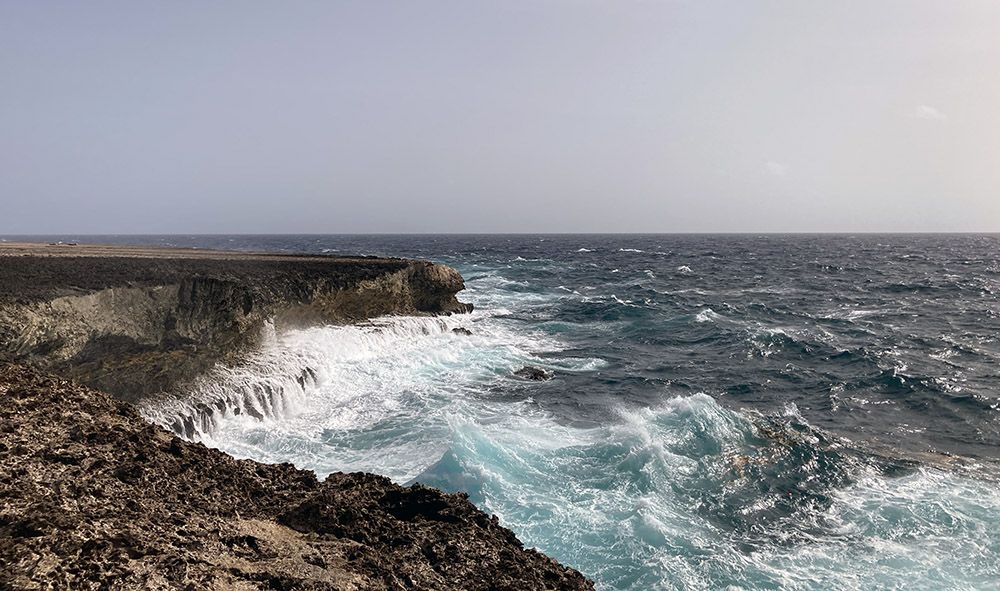
The unpaved road then leads to a surrealistic landscape. Think of a sort of barren valley full of cacti surrounded by rocky hills. You can imagine yourself in a good old-fashioned western with Clint Eastwood. Too beautiful and special to pass up! There are information boards at the sights, such as the lighthouse and the Malmok ruins. Our tip is to take the time to read through the information. You will learn many interesting historical and geological facts about the places.
Returning to the park entrance via the west coast
.
Both routes end up at the west coast. There are several small beaches here. There is almost no current and there is no surf. An ideal place to picnic after a walk or the safari of the long route. Take a refreshing dip in the crystal-clear water!
After the country house at Boka Slagbaai, the unpaved road continues through the beautiful, hilly interior. You should have started this last part of the route by 4 PM at the latest. A patrol car will drive behind you to see to this. Don’t forget to take some pictures of the many flamingos and pelicans at the water’s edge of the bay!
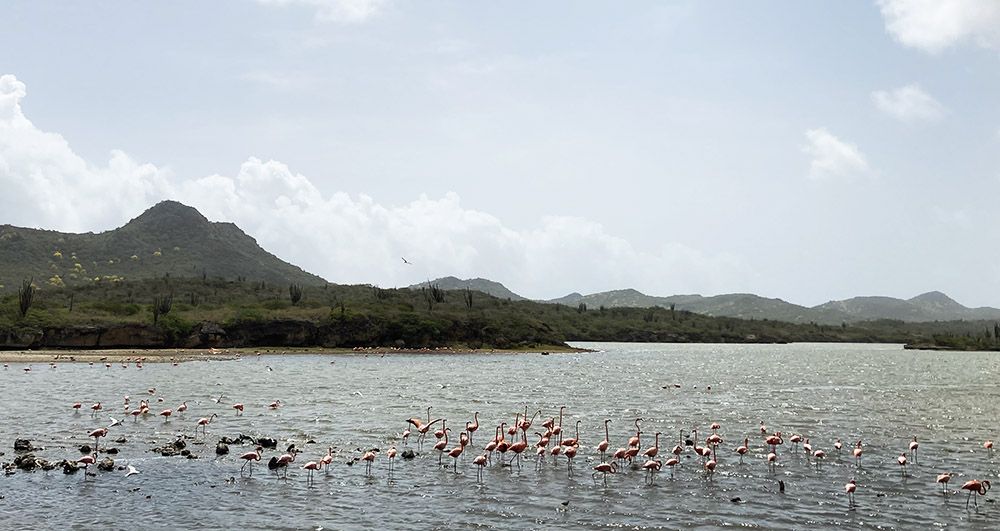
Practicalities for your visit to Washington Slagbaai
The following tips will help you prepare for your visit to the national park.
Entrance
The entrance fee is 25 dollars per person per year. This entrance ticket is issued in your name. That is why you have to bring an ID card (passport or driver’s licence). You may then enter the park by showing your ticket, ID and proof of payment.
If you go diving on Bonaire, you have to buy a Scuba Diving Tag at 45 dollars. You then no longer need to pay an entrance ticket to visit the park. Both the entrance ticket and the Scuba Diving Tag can also be ordered online.
The Park is open Wednesday to Sunday from 8 AM to 5 PM. However, you can only enter the park until 1 PM. This gives you enough time to follow the short route through the park anyway.
Transportation
The roads in the park are almost exclusively gravel roads with bumps and holes. For that reason alone, we advise you to enter the park with a 4-wheel-drive car or pick-up truck that stands high on its wheels. Certainly not with a motorbike or scooter. Also check the quality of the spare wheel in advance. On steep sections, however, you will find concrete slabs or asphalt. This is necessary because otherwise you cannot drive up the hill in the rainy season.
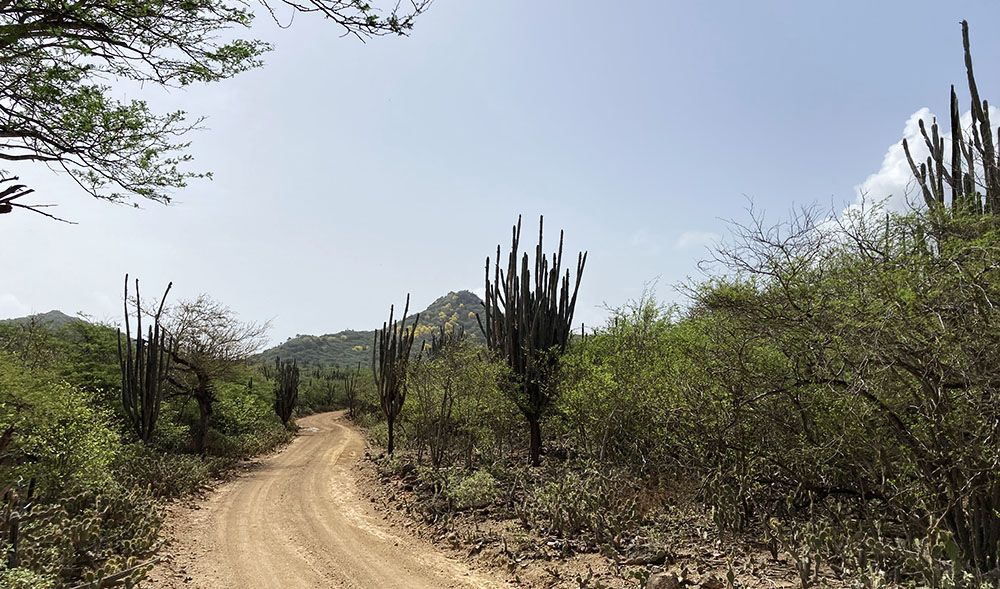
Routes
At the entrance to the park, you will be given a clear map of the long and short routes. The map also shows the highlights. The map can also be downloaded. Each of the two routes can only be driven in one direction. Keep this in mind if you don’t want to miss out on certain sights.
Eating and drinking
Slagbaai manor house used to offer the opportunity to eat and drink. Unfortunately, there is no restaurant in the park anymore. So do bring your own food and drink. And especially lots of water.
What else to take
Besides water, protection against the sun is very important. Apply reef-friendly sunscreen. Sunglasses and a cap are also necessary. It is also a good idea to bring a swimsuit and towel. And if you have one, a mask and snorkel as well. The nice beaches on the west coast are too attractive to just drive by.

